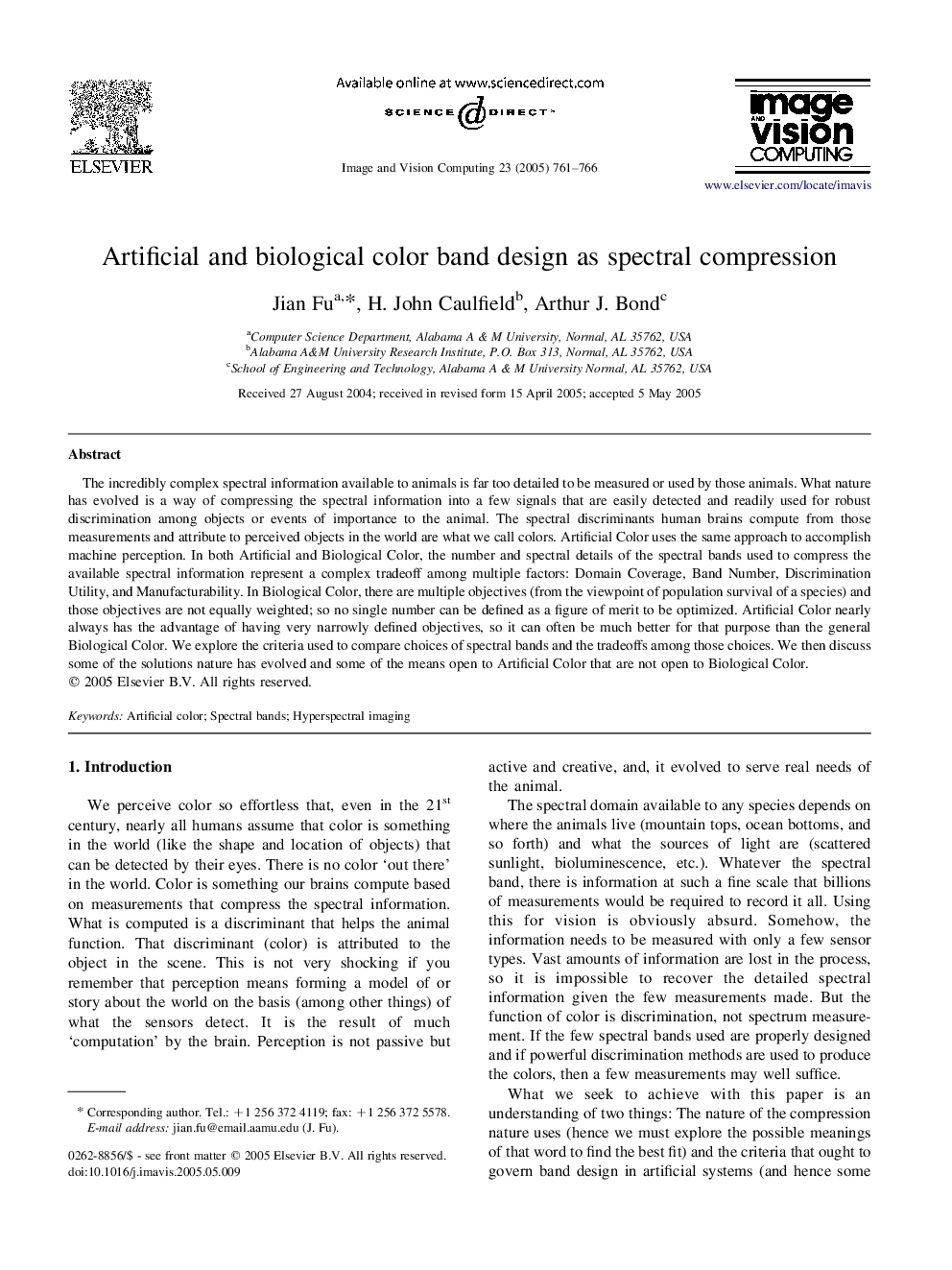| Article ID | Journal | Published Year | Pages | File Type |
|---|---|---|---|---|
| 10359613 | Image and Vision Computing | 2005 | 6 Pages |
Abstract
The incredibly complex spectral information available to animals is far too detailed to be measured or used by those animals. What nature has evolved is a way of compressing the spectral information into a few signals that are easily detected and readily used for robust discrimination among objects or events of importance to the animal. The spectral discriminants human brains compute from those measurements and attribute to perceived objects in the world are what we call colors. Artificial Color uses the same approach to accomplish machine perception. In both Artificial and Biological Color, the number and spectral details of the spectral bands used to compress the available spectral information represent a complex tradeoff among multiple factors: Domain Coverage, Band Number, Discrimination Utility, and Manufacturability. In Biological Color, there are multiple objectives (from the viewpoint of population survival of a species) and those objectives are not equally weighted; so no single number can be defined as a figure of merit to be optimized. Artificial Color nearly always has the advantage of having very narrowly defined objectives, so it can often be much better for that purpose than the general Biological Color. We explore the criteria used to compare choices of spectral bands and the tradeoffs among those choices. We then discuss some of the solutions nature has evolved and some of the means open to Artificial Color that are not open to Biological Color.
Related Topics
Physical Sciences and Engineering
Computer Science
Computer Vision and Pattern Recognition
Authors
Jian Fu, H. John Caulfield, Arthur J. Bond,
